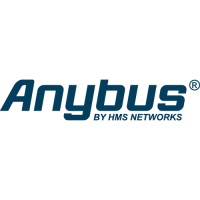PROFINET Implementation Details 18 (258)
4 PROFINET Implementation Details
4.1 General Information
This chapter covers PROFINET specific details in the Anybus implementation. Note that the
use of such functionality may require in-depth knowledge in PROFINET networking internals
and/or information from the official PROFINET specification. In such cases, the people respon-
sible for the implementation of this product are expected either to obtain these specifications to
gain sufficient knowledge or limit their implementation in such a way that this is not necessary.
The GSD file must be changed to reflect all changes.
Implementation overview:
Conformance Class The Anybus module complies to conformance class C.
Performance
Characteristics
• 100 Mbps, full duplex with autonegotiation enabled as default
• Real Time (RT) communication, 250 μs cycle time
• Isochronous Real Time (IRT) communication, 250 μs cycle time
Device Model • One IO Device instance
• The IO Device instance includes an Application Process referenced by its
identifier (API). API 0 (zero) is implemented by default.
• The API implements one or more slots
• Each Slot implements one or more subslots
• Each subslot may implement one or more Channels
Slots & Subslots Up to 128 subslots in total.
IO Data 1440 bytes of IO data in each direction, including status bytes (4 bytes for DAP
submodules + 1 byte per additional submodule)
See also...
• Electronic Data Sheet (GSD), p. 9
4.2 Application Process Instances (API)
As mentioned previously, acyclic requests towards API 0 are forwarded to the Application Data
Object.
Cyclic data exchange is by default carried out through API 0 (i.e. the Anybus associates mod-
ules and submodules with API 0).
See also...
• Application Data Instances (ADIs), p. 13
Anybus
®
CompactCom
™
40 PROFINET IRT Network Guide SCM-1202-023 EN 1.8

